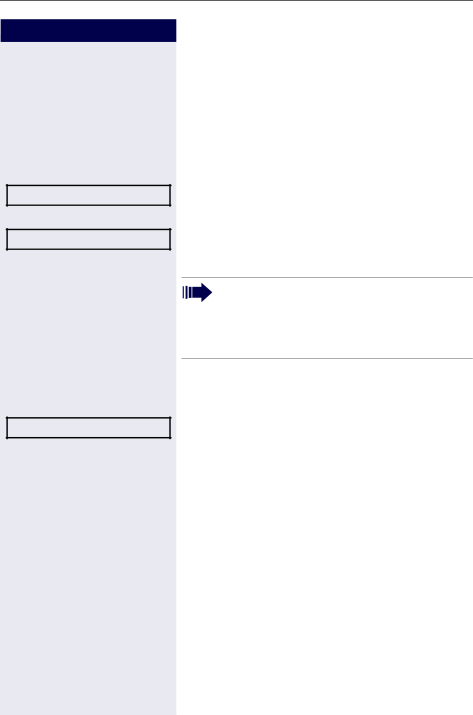
Privacy/security
Step by step
Lock phone?
Unlock phone?
Unlock phone
:
or
j
:
j
Locking the telephone to prevent unauthorized use
You can prevent unauthorized parties from using your phone during your absence.
Locking the phone
Open the idle menu Æ page 15.
Select and confirm the option shown.
select and confirm the option shown.
Enter code (telephone lock) Æ page 71.
When the phone is locked, a special dial tone sounds when the handset is lifted. Within the system, users can make calls as normal.
Your phone can also be locked or unlocked by an authorized party Æ page 70.
Unlocking the phone
Open the idle menu Æ page 15.
Select and confirm the option shown.
Enter code (telephone lock) Æ page 71.
69